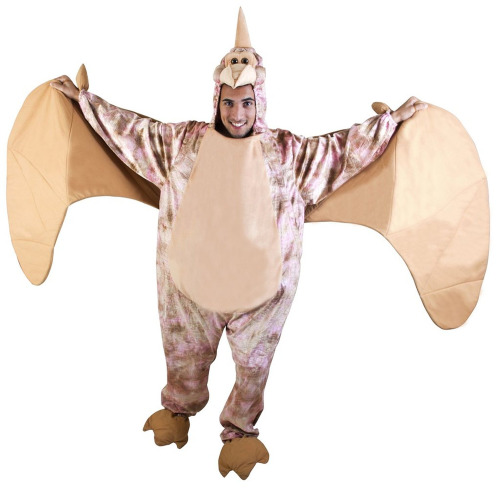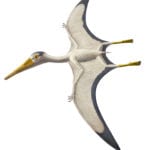Photo ©AMNH
When you think of giant flying reptiles soaring over prehistoric landscapes, do you call them pterodactyls or pterosaurs?
In pop culture, pterodactyl is sometimes used as a catch-all for prehistoric flying reptiles that are known as pterosaurs. The 2005 movie “Pterodactyl” tells the story
of a giant flying pterodactyl that emerges from a volcano. The popular children’s book “Can I Bring My Pterodactyl to School, Ms. Johnson?” features a pterodactyl who can ward off bullies and loves to read. Stroll our gift shop to pick up a toy
pterodactyl. Even buy an adult size pterodactyl costume and soar into our next Halloween-themed After Dark 21+ event in style.

Pterodactyl, or Pterodactylus antiquus, is actually a specific type of pterosaur in the group Pterosauria,
which encompasses the entire group of prehistoric flying reptiles.
Pterodactylus antiquus lived 150 million years ago, ate insects or fish, and had wingspans of up to five feet.
Pterodactyls were the first known pterosaurs when their fossils were discovered in Germany in the late 1700s.
Since the discovery of the pterodactyl, more than 150 species of flying reptiles have been identified as pterosaurs. The variety seems endless. Some were small enough to fit in the palm of your hand while others had 30-foot wingspans. Some had long necks and prominent beaks while others had robust heads and long tails.
Pterosaurs are varied enough that the American Museum of Natural History created an entire exhibition about them, Pterosaurs: Flight in the Age of the Dinosaurs. The exhibition is on display in our museum in Pittsburgh until May 22.

